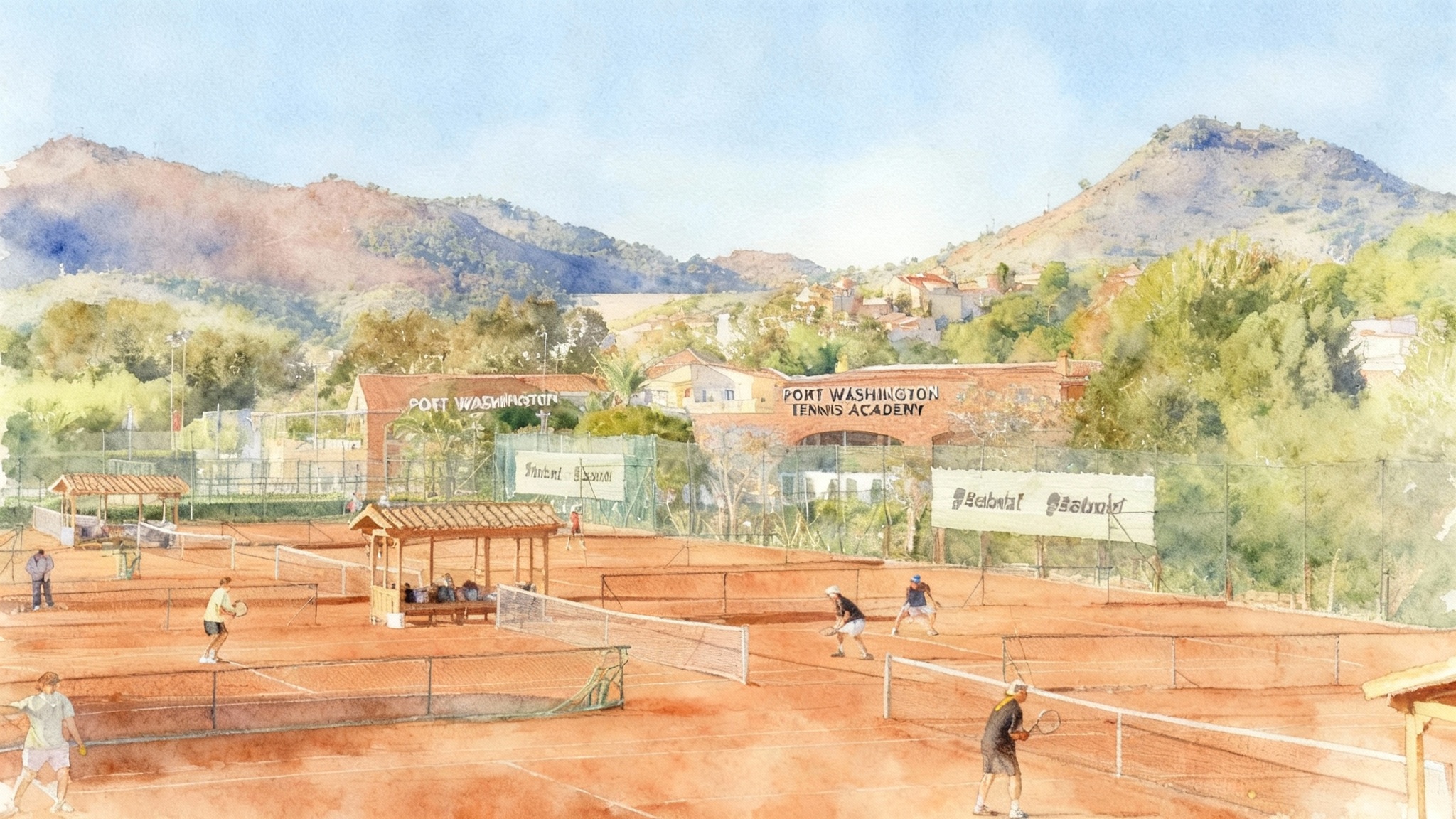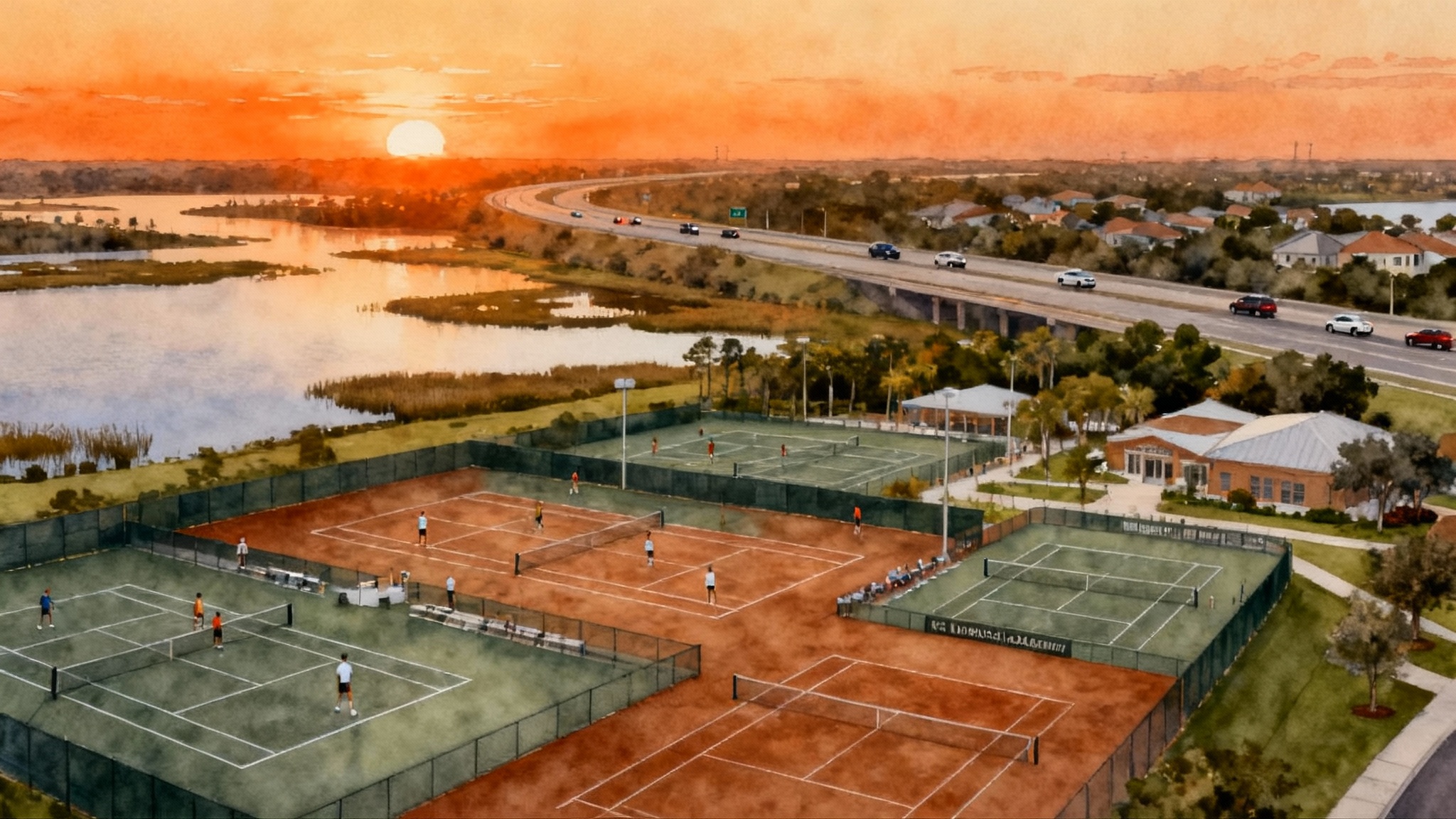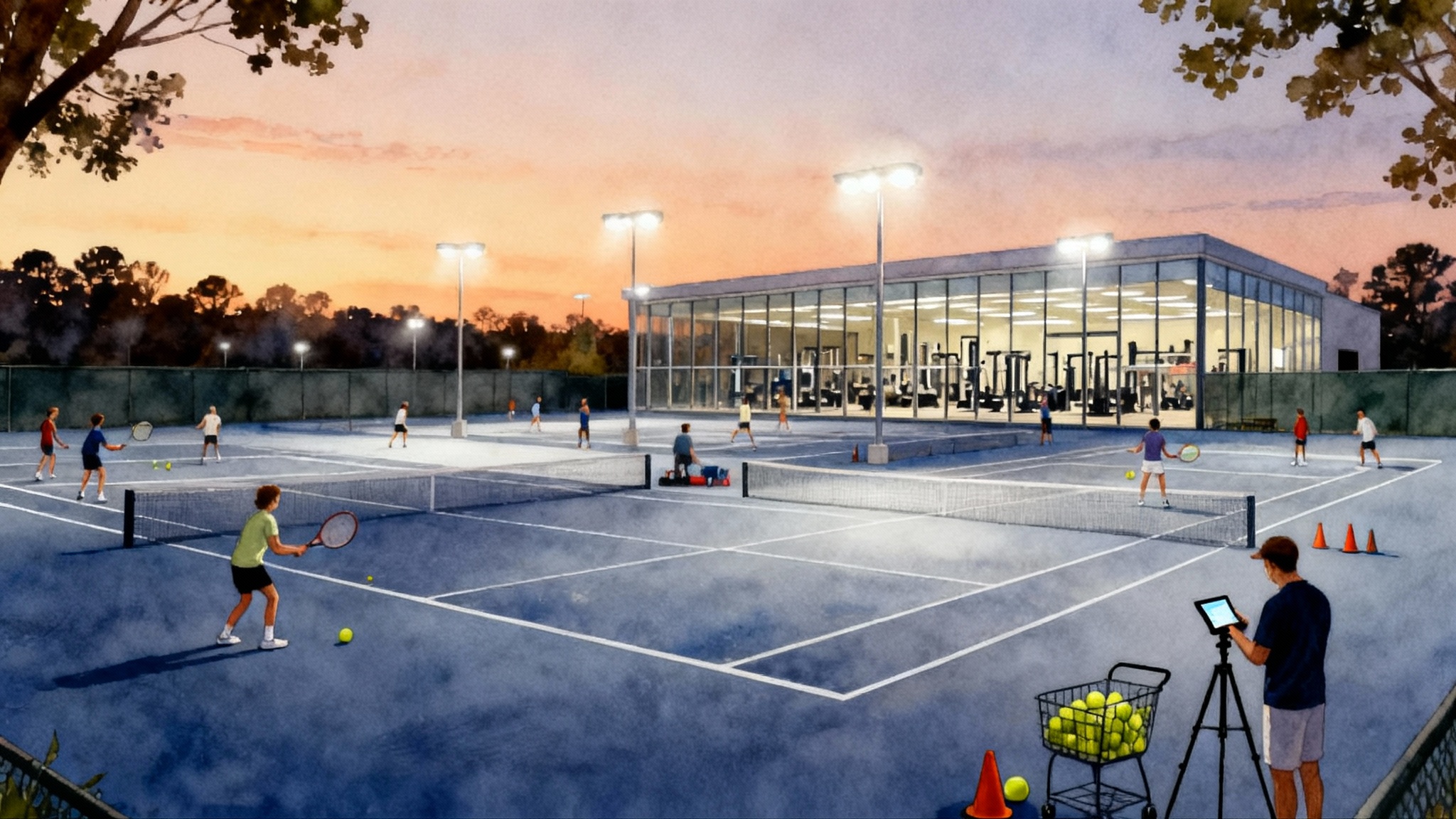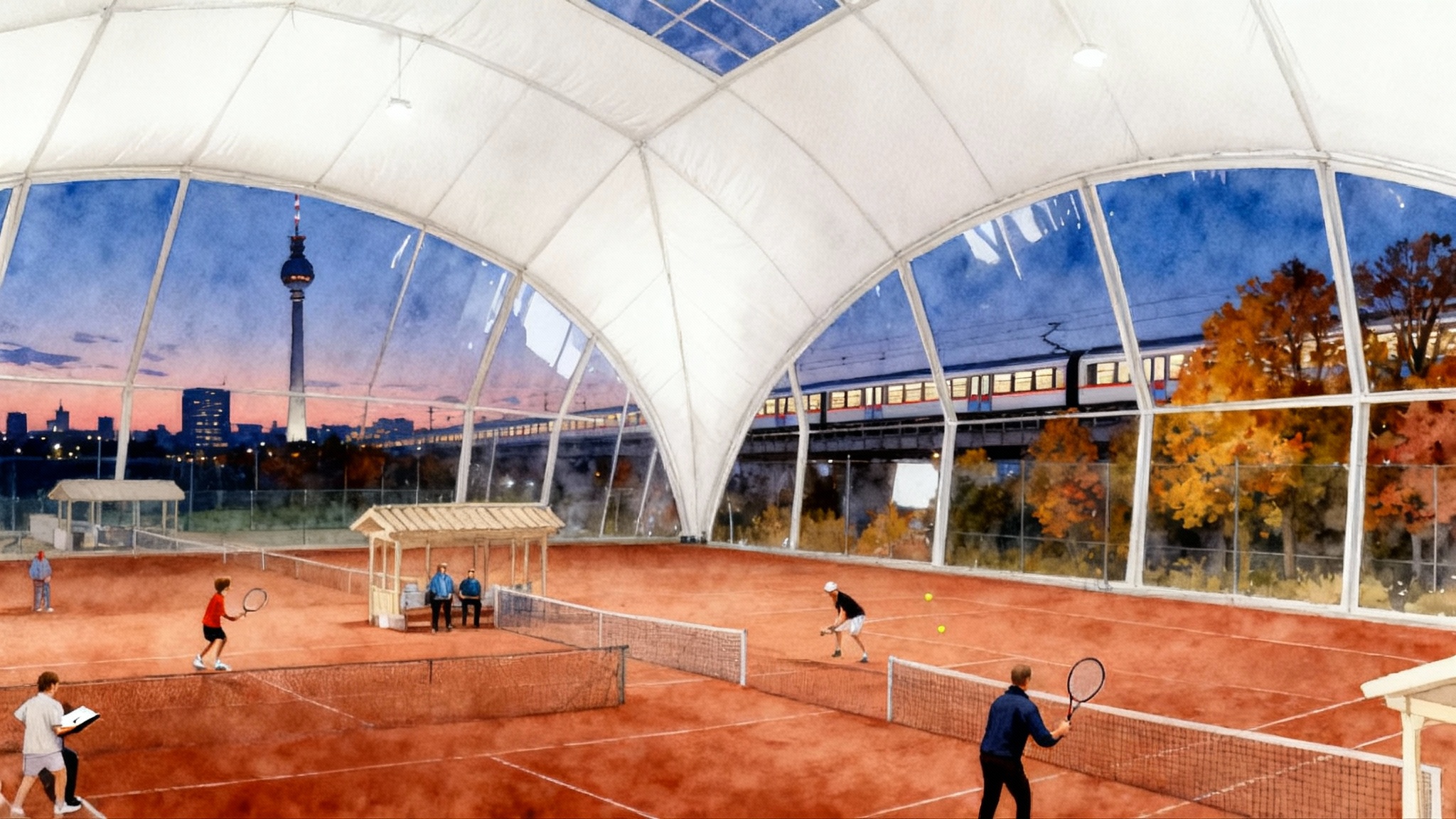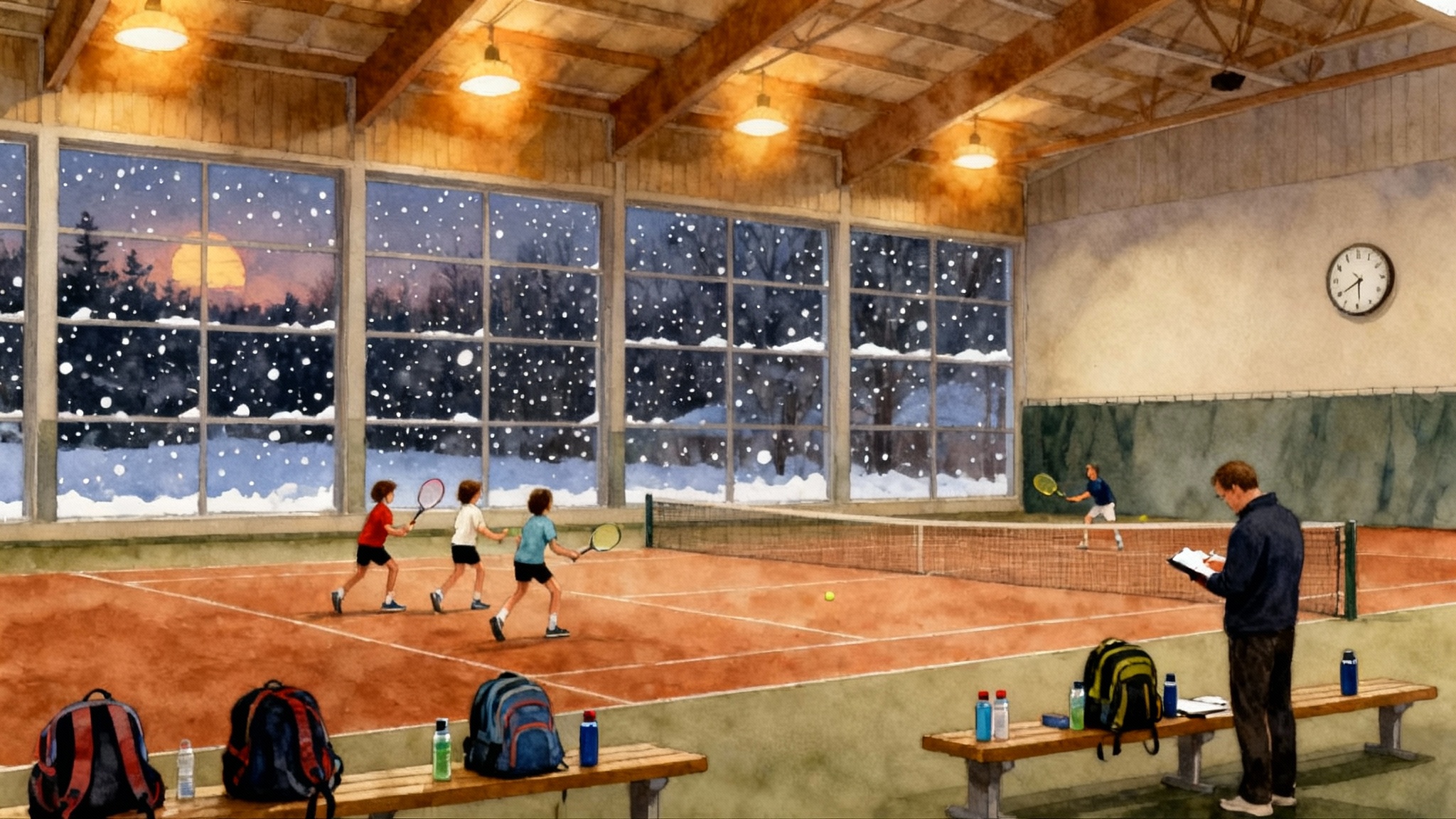Best SoCal Tennis Academies 2025–2026: LA, OC, San Diego
A practical guide to Southern California’s top tennis academies for Winter 2025 to Fall 2026 enrollments. Compare training models, clay access, boarding and school options, UTR and USTA match play, facilities, coaching ratios, commute, and pricing.

How to use this 2025–2026 guide
If you or your player plans to enroll between December 2025 and September 2026, timing matters. This guide focuses on Los Angeles, Orange County, and San Diego programs that are actively enrolling for Winter 2025, Spring 2026, Summer 2026, and Fall 2026. We compare how each market trains juniors and adults, where you can actually find clay, which programs bundle school or boarding, how often you can play Universal Tennis and United States Tennis Association matches, plus realistic coaching ratios, commute realities, and pricing bands.
For each county, we outline what is unique, then offer quick-pick shortlists by goal and budget at the end. If you want a tailored shortlist based on UTR, age, and commute, use our internal tools on TennisAcademy.app, such as the SoCal academy explorer and our placement request form. Planning beyond SoCal? See our Orlando and Lake Nona guide and our Tampa–Sarasota–Naples guide for Florida comparisons.
Training models in SoCal, explained simply
Think of Southern California tennis like three different kitchens preparing the same dish.
- High-performance academy kitchen: A dedicated training environment with a clear player pathway, daily fitness, periodized scheduling, and frequent verified match play. It is built for volume and intensity. Boarding and academics may be on site or tightly coordinated.
- Club-integrated kitchen: Training lives inside a membership club or city facility. Group quality can be excellent, but schedules and court access share space with league play and lessons. The culture can be more community oriented and more flexible for multisport families.
- Hybrid kitchen: A high-performance team that rents multiple venues and stitches together a competitive calendar. This model can deliver strong results if the coaching staff is stable and the match-play calendar is curated.
What changed for 2025–2026: A few SoCal programs have formalized boarding and school offerings with clearer calendars and inclusive fees. For example, Weil Tennis Academy in Ojai, a popular choice for SoCal families who want boarding within driving distance, has posted its upcoming calendar and inclusions, which gives families a concrete benchmark for full-time boarding costs and school timelines (Weil 2025–2026 tuition and dates).
Clay access, match play, and ratios that actually affect improvement
- Clay access: Southern California is overwhelmingly hard court, but limited clay exists. In Los Angeles, select academies train part week on clay to build point construction and patience. Orange County’s large public complexes are predominantly hard. In San Diego, clay is typically at private clubs or specific training blocks rather than full clay academies.
- Match-play frequency: For steady UTR growth, juniors need at least one block of verified sets weekly or biweekly and one tournament weekend per month outside peak exam periods. Adults aiming at 4.0 to 4.5 should add one weekly match or league date plus a live-ball or point-play clinic.
- Coaching ratios to insist on: For performance drilling, look for 1 coach to 4–6 players. For live-ball or situational point building, 1 to 4 is ideal. For tactical video or pattern work, a larger court group is fine if a coach is actively charting and giving specific corrections.
Los Angeles County: depth, variety, and limited clay options
Los Angeles offers the widest range of training styles, from purpose-built junior programs in Burbank and the San Gabriel Valley to elite blocks on the Westside. Strengths include a deep tournament calendar, a large pool of high-level sparring partners, and coaches with college placement networks. Weaknesses include traffic and fragmented venues.
Typical player profile fits
- Juniors who need frequent, day-trip tournaments and a big ladder of practice partners.
- Adults who want high-intensity live-ball and can train early mornings or late evenings.
Notable patterns
- Select programs in Burbank and the Valley run mixed-surface weeks that include some clay, which helps juniors practice height, shape, and patience without having to leave the county.
- The Friday match-play culture is strong. Expect weekly in-house sets and periodic verified events that let you build UTR with low travel.
Commute notes
- North–south drives can double in duration after 3 p.m. Families who can train 1 to 4 p.m. or 7 to 9 p.m. often save an hour a day. Try a three-day trial in real traffic windows before you commit for a semester.
Pricing bands you will see in LA
- High-performance after-school blocks: 130 to 180 dollars per session, with discounts for multi-day commitments.
- Full-time day tracks without school: 20,000 to 35,000 dollars for the academic year depending on hours and add-ons.
- Private lessons: 120 to 225 dollars per hour for senior staff.
Orange County: big facilities and club-integrated training
Orange County’s strength is facility scale. The public complex at Irvine’s Great Park anchors large junior programs and frequent team practices, while private clubs in Newport Beach, Laguna Niguel, and Irvine support both junior and adult performance tracks.
Typical player profile fits
- Juniors who thrive in structured, club-integrated environments with lots of peers at similar levels and predictable after-school blocks.
- Adults who want stable weekday evening clinics and weekend match play without driving to another county.
Productive ways to use OC facilities
- Build a two-court routine: one day of performance drilling at a high-performance group and one day of organized match play, then add a lighter day with serve or return reps.
- Ask about verified sets: Some programs run internal UTR-verified ladders or partner with local organizers. A regular weekly set is worth more than sporadic event bursts.
Pricing bands you will see in OC
- Club-integrated high-performance: 25 to 45 dollars per hour in group bundles, or 800 to 1,500 dollars per month for multi-day packages.
- Full-time day tracks without boarding: 22,000 to 38,000 dollars per academic year depending on hours and travel coaching.
- Private lessons: 110 to 200 dollars per hour for staff with strong player résumés.
Clay reality
- Expect hard courts almost everywhere. If clay is essential, you will be piecing together limited blocks at select venues rather than finding a clay-only week.
San Diego County: tournament hub with a clean performance pathway
San Diego has a strong junior tournament culture and a flagship public venue at Point Loma that doubles as a community hub. The adult environment is friendly to performance-minded players who prefer small-group live-ball and consistent match play.
Flagship venue snapshot
- The Barnes Tennis Center in Point Loma is a competitive hub for juniors and adults and publicly lists performance programs, which makes planning easier (Barnes performance programs and academy). Barnes also hosts large-scale events and has expanded multisport facilities, which helps with access and event calendars.
Typical player profile fits
- Juniors seeking a direct weekly path from training to verified match play with minimal commute within the city.
- Adults moving from clinic fitness to real point play, with good availability on weeknights.
Pricing bands you will see in SD
- High-performance blocks: 130 to 180 dollars per session depending on level and coach seniority.
- Month-to-month packages: common and more flexible than semester bundles.
- Privates: 110 to 200 dollars per hour for lead pros.
Clay reality
- A few clubs maintain clay, but most academy hours are on hard. Consider one clay session weekly if a program offers it to build variety in your game.
Boarding and school options that are SoCal realistic
- Full boarding with on-site or fully integrated academics: Best choice if you want a closed loop of training, study hall, and tournament travel under one roof. Weil Tennis Academy in Ojai is the most established boarding option within a drivable radius of LA and OC, with posted 2025–2026 dates, inclusive fee structures, and a WASC-accredited prep school on campus. Use its published calendar and fees to benchmark your total cost of attendance for the year. If you are comparing with Florida boarding environments, also review the Gomez Tennis Academy profile.
- Host-family boarding attached to a day academy: Viable for out-of-area SoCal families who want Orange County or Los Angeles training without moving the whole household. Vet homes, transportation times, study hall expectations, and tournament supervision details.
- Day student plus online school: The most common SoCal pathway. It offers flexibility and lets you target a program based on coach fit and match-play calendar rather than dorm availability.
Action step: If you are comparing boarding to day-student costs, add these line items to every quote so you can compare apples to apples: meals, local transport, travel coaching fees, tournament entry fees, stringing, and any college placement fees.
How often can you expect UTR and USTA match play
- Juniors on a performance track should target 8 to 12 verified competitive days per academic quarter. That could look like weekly in-house sets plus one tournament a month, with off-weeks used for technical blocks.
- Adults chasing a jump in level should build a weekly match habit plus one structured live-ball or point-play clinic that forces serve plus one or return patterns under fatigue.
Questions to ask every academy
- Do you run weekly verified sets or ladders during the school year, and how are pairings set to keep matches competitive within one UTR point?
- How many weekends per month do coaches attend tournaments, and what are the travel coaching fees?
- How are withdrawals handled during exam weeks, and do you run lighter technical days before test blocks?
Facilities, staffing, and ratios that predict day-to-day quality
- Courts and layout: Look for individually fenced courts or court groupings that let coaches run multiple score-based drills without constant interruptions. Stadium courts are nice, but you will live on standard banks of 4 to 8 courts.
- Fitness space: An on-site fitness corner or adjacent field matters if you want integrated speed and injury prevention work. A weak fitness plan is a common reason players stall at the same UTR.
- Staff stability: Ask how long lead coaches have been on court at this location. You want a lead who writes the plan, stands on the court, and reviews video weekly. Rotating staffs often drift into ball-feeding without progression.
- Ratios by block: For performance drilling aim for 1 to 4 to 6. For serve plus one and return plus one patterns, 1 to 2 to 4. For video or pattern chalk talks, larger groups are fine.
Pricing bands for Winter 2025 to Fall 2026 intakes
These ranges reflect what SoCal families are seeing this cycle. Exact numbers vary by hours, travel coaching, and whether academics or boarding are included.
- Per-session high-performance clinic: 130 to 180 dollars.
- Monthly after-school packages: 700 to 1,500 dollars for 2 to 4 days per week.
- Full-time day training, no school: 20,000 to 38,000 dollars per academic year.
- Full-time training with boarding and school: 50,000 to 70,000 dollars total yearly outlay in Southern California, with top boarding programs listing comprehensive fee schedules for 2025–2026.
- Private lessons with senior staff: 120 to 225 dollars per hour.
Use a total cost calculator. Add transportation, stringing, tournament entries, travel coaching, and college placement or recruiting advising, especially in junior senior years.
Commute considerations that save real time and money
- Map your real week: Put school drop-off, training start, training end, fitness, and homework on a calendar for Monday to Friday. Then try two trial days in live traffic. Saving 40 minutes per day is worth more than a small discount.
- Choose a two-venue plan: Many families pair a high-performance site with a second, closer venue for one day of serve and return work. This reduces daily drive time but preserves quality.
- Adults: If you work downtown or in a beach city, look for late evening performance clinics near your office and one weekend morning match slot near home. The mixed plan often survives the workweek better than a single venue.
Quick-pick shortlists by player goal and budget
College-bound junior
- Budget friendly: Club-integrated Orange County programs with two to three weekday blocks, a weekly verified set, and monthly tournaments. Pair with one private every other week focused on serve and first ball.
- Mid-range: Los Angeles or San Diego high-performance groups that publish ladders and match-play schedules, plus periodic college coach visits. Prioritize programs with consistent 1 to 4 to 6 ratios and guided fitness.
- Premium or boarding: Full boarding with on-site academics and a published 2025–2026 calendar. Benchmark inclusions and college placement support against a boarding program that publishes dates and fees for Fall 2025 to Spring 2026.
Pro-track junior or top Division I target
- Budget friendly: A hybrid schedule that includes three high-performance blocks, a weekly verified set, and one day of clay or slower-court drilling. Add targeted fitness two times per week.
- Mid-range: A lead-coach-driven Los Angeles program with daily fitness and film review. Look for a travel schedule that includes sectional and national events.
- Premium or boarding: A closed-loop environment with study hall, diet oversight, and coaches on site for morning and afternoon sessions. Confirm tournament travel coaching is included or capped.
Adult performance path
- Budget friendly: Two live-ball sessions per week at a club-integrated program plus one weekly set with a fixed partner. Add a 30-minute serve slot before one clinic.
- Mid-range: One high-performance point-play clinic with a 1 to 4 ratio and one doubles strategy session weekly. Enter league or monthly money tournaments for pressure reps.
- Premium: A small-group tactical block with a senior coach, supplementary strength sessions, and monthly video review. Pair with a weekly practice set.
Enrollment timeline for Winter 2025 to Fall 2026
- November to December 2025: Secure Winter blocks, especially in Los Angeles where late-afternoon slots fill first. If you are exploring boarding for Fall 2026, book a tour and request a written fee schedule now.
- January to March 2026: Reassess ratios and ladders after the first six weeks. If match play lags, add a weekly verified set through your program or a nearby organizer.
- April to June 2026: Lock Summer weeks early if you need morning training. Rising sophomores and juniors should begin light college planning with a short list of fit schools.
- August to September 2026: Finalize Fall schedules and confirm travel coaching expectations for the first two tournament months.
Documents to request
- Written training schedule with coach names and ratios by day.
- Published match-play calendar with UTR-verified offerings where applicable.
- Detailed fee schedule that includes travel coaching and stringing expectations.
- Academic and study support plan if boarding or school integration is part of the package.
County-by-county examples to anchor your research
These examples illustrate what to expect on the ground. Compare them to similar options near your home or school.
- Los Angeles: Performance programs centered in Burbank and the Valley often publish clinic pricing and spell out high-performance and elite blocks with clear ratios and schedules. Some locations include limited clay to broaden patterns and footwork. Use this as your LA template for a mixed-surface week.
- Orange County: Large public complexes like Great Park and club-integrated programs in Newport and Irvine can support multi-day junior pipelines and robust adult calendars. Ask about in-house ladders and how they place players within one UTR point.
- San Diego: The Point Loma hub lists junior and adult performance offerings publicly and supports frequent tournaments. The transparent schedule makes it easier to plan verified match play and progress tracking.
For more big-market comparisons, see our New York City area guide.
Final checklist before you sign
- Watch practice twice. One day should be a heavy drilling day, another a match-play day. Take notes on feedback quality and time with the lead coach.
- Verify ratios in writing for your specific block and time of day. Ask who is on court when the lead coach travels.
- Ask for three recent player outcomes that match your goal, not just the biggest résumé names.
- Confirm your exact commute windows. Run the drive at the real times you would travel.
- For boarding or host-family options, ask about study hall, supervision at tournaments, and how medical or injury issues are handled.
A smart way to choose in 2025–2026
The best academy for you is the one that fits your weekly life and your match calendar, not just your highlight goals. Start with your goal, then stress test the plan in real time. Confirm ratios, verify match play, and price the full year, including travel and stringing. If everything still looks good after two practice visits and a commute trial, you have found a fit worth committing to.
